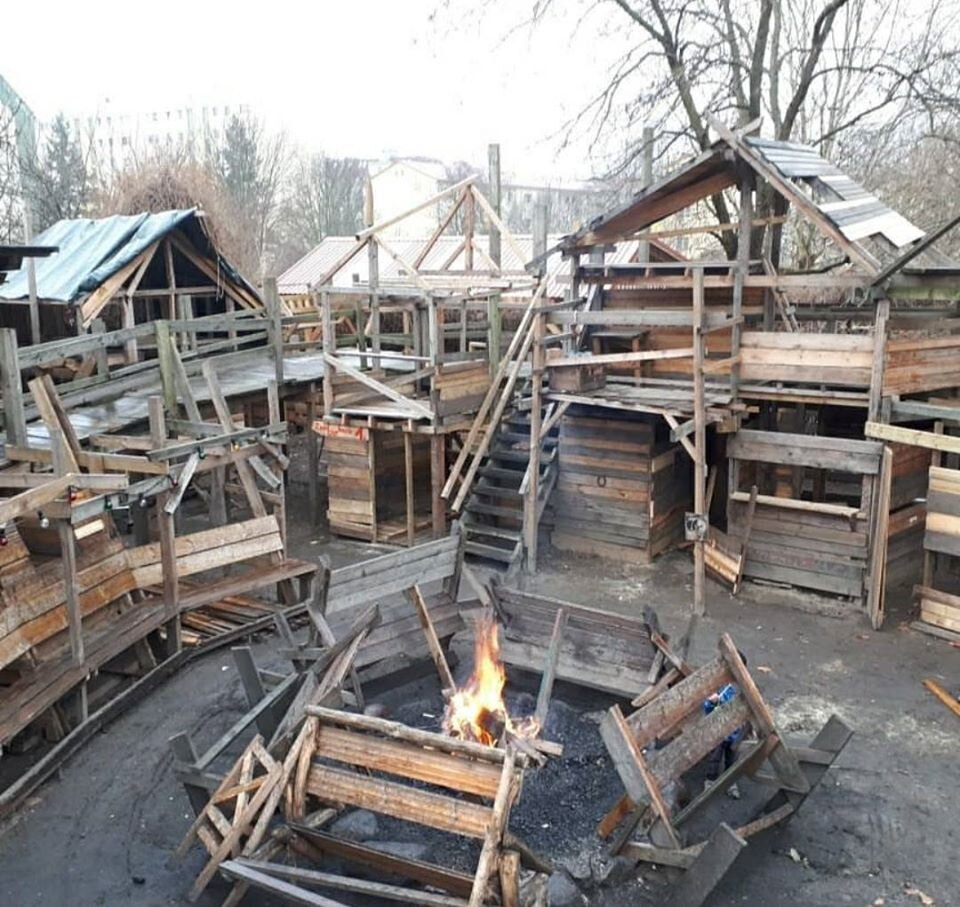Over our time working with school aged children in a loose parts environment under a predominantly playwork philosophy we have found the study of chaos and order a really fascinating topic when considering children’s play. We often get remarks about how unappealing our play environment looks, how chaotic, and therefore, how dangerous it seems through the eyes of adults. However, we are more interested in how the children see and therefore interact with the space. One thing we have observed over and over again is that chaos is a key stimulus and motivation behind the construction and maintenance of order in a play space. We find it ironic and comforting to know that when children are left to their own devices children naturally seek to create order through their play.
This can be expressed either internally or externally. Internally, on a conceptual level: children create and maintain rules that govern how a play frame is to operate. These can be spoken or unspoken between the children but you can rest assured that there is always an underlying thread of order that holds play frames together – these can be seen through the role playing, the rules that govern a game of cops and robbers, or the unspoken agreement that we are not going to hurt each other while we wrestle.
Externally in the play environment around them: Children take a chaotic and unstructured environment, in this case a Loose Parts environment, and create structure and order within that environment (building bases, sorting or organising loose parts, combing the loose parts to make something that can hold some sort of structure or order in the child’s mind) so that there is a physical manifestation of that order that can aid in maintaining a play frame.
On the flip side, and we think anyone who has worked with school aged children could relate to this, we see that when children are held in an environment with too much order (e.g. indoor environment where each item has its own specific purpose and area), they tend to engage in activities that deconstruct order and stimulate chaos. In this way we can think of children as the natural keepers of ‘the balance between order and chaos’. You can only engage in CREATING order through the presence of chaos; therefore children are typically fully engaged in an environment that is safe and secure, but also presents unlimited opportunity for growth, construction and reconstruction. Furthermore, when we look at human societies or the culture we have developed over time, is it nothing more than pockets of order, created through both internal (morals, social norms, spirit and religion) and external means (infrastructure and physical comfort), within a chaotic, natural environment.
So the practice of creating order in a chaotic play space is the same process that humanity has been engaged in for tens of thousands of years. The process of creating structure and order in a chaotic and seemingly uncontrollable environment is at the core of what it means to be a functioning human within a societal or cultural context. We love our Loose Part area for many reason, but one is because it gives the children an opportunity to use the creativity and imagination in a way that stimulates and maintains order. They have the opportunity to sharpen their creative skills in a way that directly relates to their ability to be a productive member of society. The challenge of creating this order never has to end because the children will eventually intrinsically deconstruct their play frames or creations to make room for the next challenge.
Play: The ultimate evolutionary tool for establish and maintaining order
ORDER AND CHAOS
Photo credit: Kolle 37 Adventure Playground, Berlin

